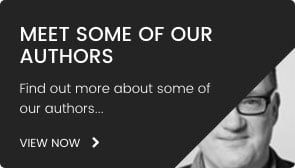A Guide to Book Bands
What are Book Bands?
Book bands originated from The Institute of Education’s publication, Book Bands for Guided Reading (Bickler et al, 1998) and built on the proven success of the Reading Recovery initiative. Book Band levels were introduced as a means for schools to instil a breadth of reading across a variety of published reading schemes so that children are able to access a variety of texts to keep them engaged during their journey to literacy. There was also a need to ensure these schemes met the criteria for the given colour band/level and that this was applied consistently across the various publishers’ schemes which help to deliver the National Literacy Strategy and National Curriculum levels.
Books bands are now the most common system used by schools and by educational publishers of reading books, thus giving teachers a means of assessing children’s progress in reading in the absence of National Curriculum (NC) levels since 2014. Although Book Bands were originally created for Key Stage 1 pupils only, schools’ need to extend assessment and monitor progression right through the primary years has led to the creation of further levels up to and including super-confident readers in Year 6.
Publishers and educational book suppliers work with educational and literacy consultants to level in a best-fit way, both books in reading schemes (a series of precisely levelled and skilfully written books that support reading development) and ‘real’ books (the kind of children’s books found in bookshops). As ‘real’ books will have more naturalistic language, this levelling process is a craft rather than an exact science, but consultants and reading experts with years of levelling experience work to align their bands with commonly established attributes for each level and based on the Institute of Education’s publication Book Bands for Guided Reading (Bickler et al, IOE 1998).
The colour bands commonly begin at lilac (reception aged child starting to share wordless books) and are available up to Black+ (super-confident Year 6) from many educational publishers and school suppliers of collections of ‘real’ books. Most publishers and educational suppliers use a standardised colour palette, although there are some exceptions and alternatives offered. Of the schools that offer book bands, not all continue using bands after white level (where the original book bands stopped) but Lime level is now deemed, in many schools, as vital for readers up to the end of Year 2.
Many school suppliers, including Badger Learning, are offering banded ‘real’ books to widen children’s reading experiences and to promote reading for pleasure. The levelling is done in a best-fit way, meeting the criteria as much as ‘real’ books can, allowing for the naturalistic language and uncontrived way real books are written.
Why use Book Bands?
Banded books ultimately provide children with a colourful stairway of progression in reading. Teachers can make book-buying decisions to meet the needs of individual pupils, catering to their interests and bringing variety and breadth to children’s reading whilst monitoring and evidencing their progress using a highly graduated progression throughout each key stage that moves on termly at expected levels of progress.
The book bands philosophy has not changed and at its heart is the opportunity it gives children to read a mix of reading scheme and ‘real’ books from a range of publishers whilst being consistently and appropriately challenged. Using banded real books, pupils are able to choose freely from within a structured range, making reading more independent and enjoyable.
KS2 book bands are now firmly established in many schools as a progressive reading framework and a means of evidencing children’s reading progression. At each stage, pupils have a sense of freely choosing books that appeal to their developing reading tastes within a selection that matches their ability, so they are able to get the most enjoyment and a sense of achievement.
In some instances, secondary schools use book bands to support and monitor progress for children who require additional support in their reading or to structure reading choices for children within a range of titles that still provide variety and challenge.
What are the Book Band colours?
The table below displays each book band level and their equivalent reading age. Most children will work through the levels during the year, so for example, in most schools, a reception child, working at expected levels would end the year on yellow.
How do you use Book Bands?
Ongoing reading assessments are used to establish which level children are reading at and whether they need to move up to the next level to maintain the right level of challenge. Children progress through the banded colours as they gain confidence and show understanding. Because of the breadth of choice available in each colour band, they should be able to find books that appeal to them at each stage. This allows teachers to provide the opportunity for children to ‘read for pleasure’ even at an early stage in their reading journey. Many schools will use a fully decodable phonics reading scheme for the youngest children and move on to banded books from Year 2 (Expected Level Turquoise). Alternatively, reading for pleasure can be encouraged by sending a reading book home to share with a parent or carer, alongside a phonically decodable book. This should be clearly labelled “Read to Me” or similar, so that children who are still mastering phonemes and graphemes have the opportunity to hear and enjoy more interesting stories, encountering rich language and gaining knowledge. See the Department of Education’s Reading Framework P80 for advice on a letter you could create for parents.
Can Book Bands help schools stretch their budget?
Yes, book bands can certainly help schools to stretch budgets further. Most schools have reading scheme books for independent reading and home/school reading from Key Stage 1. By working with a book bands system, (once children have mastered phonics), a variety of books from different publishers can be accessed and ‘real’ books can be used to supplement and add breadth to existing resources. If any new resources are added, this will not deem older stock redundant as new books can be purchased and used alongside existing resources and integrated seamlessly using the book band system. Classroom books can easily be updated and damages replaced without starting from scratch as everything will continue to slot into the programme. ‘Real’ books can also be banded in the library, using both existing books and new ones. Many school suppliers are continuously banding newly published books from a wide range of authors and publishers that can fit into an established classroom or school libraries. Badger Learning offers a range of stickers and coloured boxes that can be helpful in organising both new and existing book stock, making the best possible use of schools’ limited budgets.
How do Badger Learning band books for Key Stage 2?
|
|
Less Able |
Expected |
Able/Confident |
|
Brown |
Year 4, 5, 6 |
Year 3 |
Year 2 |
|
Grey |
Year 5, 6 |
Year 4 |
Year 3 |
|
Dark Blue |
Year 6 |
Year 5 |
Year 4 |
|
Dark Red |
|
Year 6 |
Year 5 |
|
Black |
|
|
Year 6 |
The Badger Learning collections team read all the books we select, have a strong understanding of how children develop as readers and have an unparalleled knowledge of children’s publishing to draw upon. When we work on levelling books we are constantly reading, comparing and contrasting ‘real’ books with scheme books and discussing this with each other to ensure that they represent a true progression in reading. We consider which features we feel push a book up or down in a band: perhaps the vocabulary is representative of Dark Blue but the narrative is complex enough to make a book really only accessible to the most confident readers in Year 5 reading at Dark Red? We take into account many factors depending upon the text; perhaps the reader would be required to have unexpected knowledge or insight to fully access the language or the narrative; and themes, like time travel, or devices, like parallel narratives, can render a book inaccessible to all but the most fluent reader; perhaps the text level is just right but the story unlikely to engage readers reading at this level. With each book we are asking, would a child reading at that level be able to access this text and what would challenge them? The answers to these questions are unique to each book.
For confident and super-confident readers it is important that books are matched appropriately to their emotional maturity. For this reason, Badger Learning collate specific book collections for confident readers where extra emphasis is put on the content being absolutely spot on and not inappropriate for their chronological age even though the reading age is higher.
What books are suitable for struggling readers in KS2?
Badger Learning offer a wide range Hi-Lo books for struggling readers and most of these have been book banded. It is easy to see the interest age and reading age on each collection and many are also available in eBook PDF format which may appeal to some readers more.
Choosing Book Bands for confident and gifted readers
Black and Black Plus levels are for truly confident and gifted readers in Year 6, (super-confident in Year 5), and although they may only be suitable for a very select group of readers, these children require stimulating books that stretch and challenge them and keep them wanting to read at this critical time. An important part of our role, which is only possible because we read every book within our collections, is to screen out books with inappropriate themes or language for primary school-aged children.
Book Band storage
Badger Learning offers a range of coloured storage boxes and stickers ideal for organising your school library, or classroom book selections.



